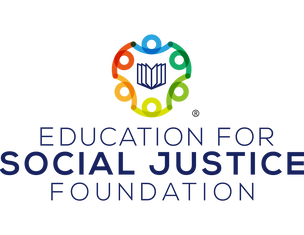Basic Questions surrounding the Japanese Military Sexual Slavery System
Although the history of and issues surrounding “comfort women” can be taught solely as one example of total war and war mobilization, the subject is tied to multiple topics, disciplines, and grade levels, extending to the university level. This human tragedy is a deeply relevant history rooted in imperialism, human rights violations, violence, discrimination, as well as distortion and denial of history—fundamental problems that echo across history to today. This chilling and often-overlooked history also serves as a valuable vehicle to address and counter sexual and gender-based violence across history worldwide. Considering the fundamental questions and concerns raised by the history of “comfort women,” this topic extends to critical past and current issues, including the civil rights advocacy of the #MeToo movement, the Black Lives Matter movement as well as other instances of sexual and gender-based violence in conflict or non-conflict.
Educators who seek to examine this history through a more modern and holistic lens can refer to the following questions regarding “comfort women” and the section Central Themes and Research Topics. The Central Themes and Research Topics section focuses on the connection between human rights violations and imperialism, state-sanctioned violence and discrimination, and ongoing injustice rooted in distortion and denial of history. Educators can also use this section as additional materials to plan their lessons, units, or courses. Increasing students’ awareness and fundamental understanding of the causes and consequences of WWII in Asia seen through the Japanese military sexual slavery system will encourage them to consider the importance of using power for the greater good, bringing them a step closer to making choices to advocate for peace, justice, and empowerment, both today and tomorrow.
Historical background on “comfort women” history
Primary source documents
Secondary source documents
Survivors’ testimonies
Educators who seek to examine this history through a more modern and holistic lens can refer to the following questions regarding “comfort women” and the section Central Themes and Research Topics. The Central Themes and Research Topics section focuses on the connection between human rights violations and imperialism, state-sanctioned violence and discrimination, and ongoing injustice rooted in distortion and denial of history. Educators can also use this section as additional materials to plan their lessons, units, or courses. Increasing students’ awareness and fundamental understanding of the causes and consequences of WWII in Asia seen through the Japanese military sexual slavery system will encourage them to consider the importance of using power for the greater good, bringing them a step closer to making choices to advocate for peace, justice, and empowerment, both today and tomorrow.
Historical background on “comfort women” history
Primary source documents
Secondary source documents
Survivors’ testimonies
Who were “comfort women”?
What is the significance of learning this history?
What can we do to promote peace and to prevent war?
- What was their socio-economic status?
- Are the disparities between rich and poor narrowing or widening today? How do these disparities affect society at large?
- How old were they? Were there any minors? What were the international laws pertaining to sex trafficking in the 1930s and 40s?
- What were the living conditions of “comfort women”?
- What values were lacking among the soldiers and leaders who organized and operated the military sexual slavery system? Why do you think these values were absent?
- How did the Japanese government justify its invasion of neighboring countries to its own people?
- What were the actual reasons for their invasion of neighboring countries?
- Depending on the degree of control that the Imperial Japanese government had on each of its neighboring countries, young girls and women were recruited, coerced, conscripted, or forced into military sexual slavery. Various methods—including kidnapping, deceptive recruitment, pressure on families, and human trafficking—were used to operate the military sexual slavery system against international treaties.
- Yoshimi Yoshiaki said that according to the Japanese Armed Forces, “comfort stations” were established to reduce the random sexual assault of villagers in occupied nations, the spread of STIs among soldiers, and espionage, as well as providing comfort to the troops.
- How do patriarchal judgments of female worth factor into the reasoning above?
- How do the experiences of Yazidi and Rohingya women and girls differ from those of Japanese military sex slaves before and during WWII? How are they similar?
- In addition to the military sexual slavery system, what are other war crimes Japan committed against humanity?
- How does war impact human behavior? Consider these key distinctions: history versus propaganda and national chauvinism versus patriotism.
- How do cycles of discrimination, oppression, and violence manifest in war?
- How were various pieces of evidence discovered?
- What is the significance of primary and secondary sources?
- How has the Japanese government taken different positions regarding this history, and what is the Abe administration’s approach?
- How do Japan’s efforts to expunge the identities of those they colonized compare to America’s violence against indigenous people?
- What specific skills do you find most useful to gain a deeper and comprehensive understanding of evidence?
What is the significance of learning this history?
- What other historically unresolved issues continue to affect our local and global communities?
- What is the role of collective activism?
- What is the difference between a political resolution and a human rights resolution?
- What is power? How is it used in politics and in local and global economies?
- What are the challenges in arriving at a shared understanding of history?
- What is the relationship between Hak-Soon Kim’s testimony in 1991 and the #MeToo movement?
What can we do to promote peace and to prevent war?
- What are some of the reasons that countries start and engage in war?
- What does war achieve? Who usually benefits the most? Who usually suffers the most? Other consequences?
